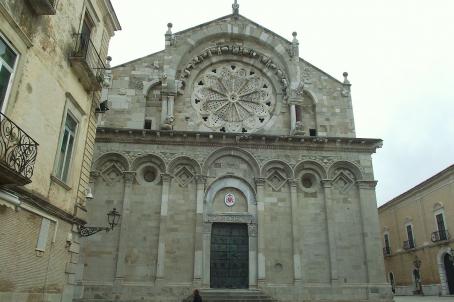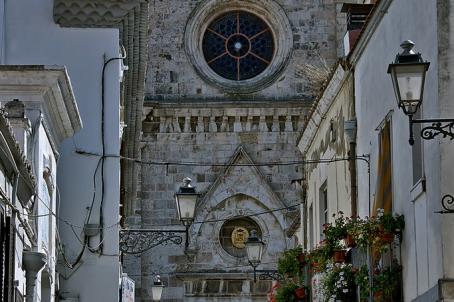Bovino Cathedral
The Cathedral of Bovino, already existed before the year 1000, as its historical documentation begins at the end of the 10th century when the bishop of that time rebuilt or restored the old cathedral in the form we know today. Further work was carried out between 1188 and 1231 when the building was converted to the Romanesque style. At the same time, the adjacent church of San Marco de Eca was incorporated into the cathedral, adjoining the presbytery, and consecrated on 18 June 1197. In 1930, the cathedral was destroyed by an earthquake and rebuilt as it was.






